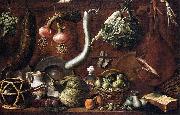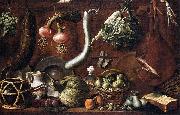|
||||||||||
|
|
||||||||||
|
Still-Life Pintura Identificación:: 74538 Vea nuestra galería en Suecia |
Still-Life 17th century Oil on canvas cjr 17th_century _ Oil_on_canvas _ cjr |
|||||||||
|
|
||||||||||
|
Still-Life Pintura Identificación:: 76081 Vea nuestra galería en Suecia |
Still-Life Date 17th century Medium Oil on canvas cyf Date_17th_century _ Medium_Oil_on_canvas _ cyf |
|||||||||
|
|
||||||||||
|
1 | Artista Previo Próximo Artista | |||||||||
|
|
||||||||||
| Jacopo Chimenti | ||||||||||
| (30 April 1551 - 30 September 1640) was an Italian late-mannerist painter. Born in Florence as Jacopo Chimenti (Empoli being the birth place of his father), he worked mostly in his native city. He apprenticed under Maso da San Friano. Like his contemporary in Counter-Maniera (Counter-Mannerism), Santi di Tito, he moved into a style often more crisp, less contorted, and less crowded than mannerist predecessors like Vasari. He collaborated with Alessandro Tiarini in some projects. Among his pupils were Felice Ficherelli, Giovanni Battista Brazze (Il Bigio), Giovanni Battista Vanni, and Virgilio Zaballi. In later years, the naturalism becomes less evident. The porcelain features of his figures accentuated the academic classical trends that restrained Florentine painting during the Baroque period. | ||||||||||
|
|
||||||||||
IntoFineArt Co,.Ltd.











